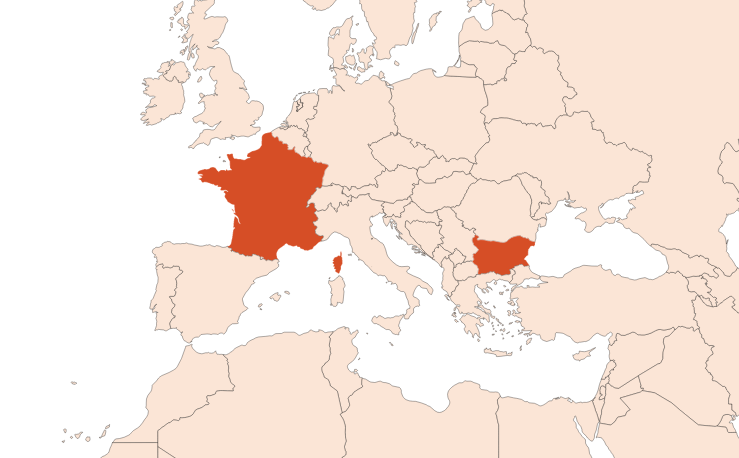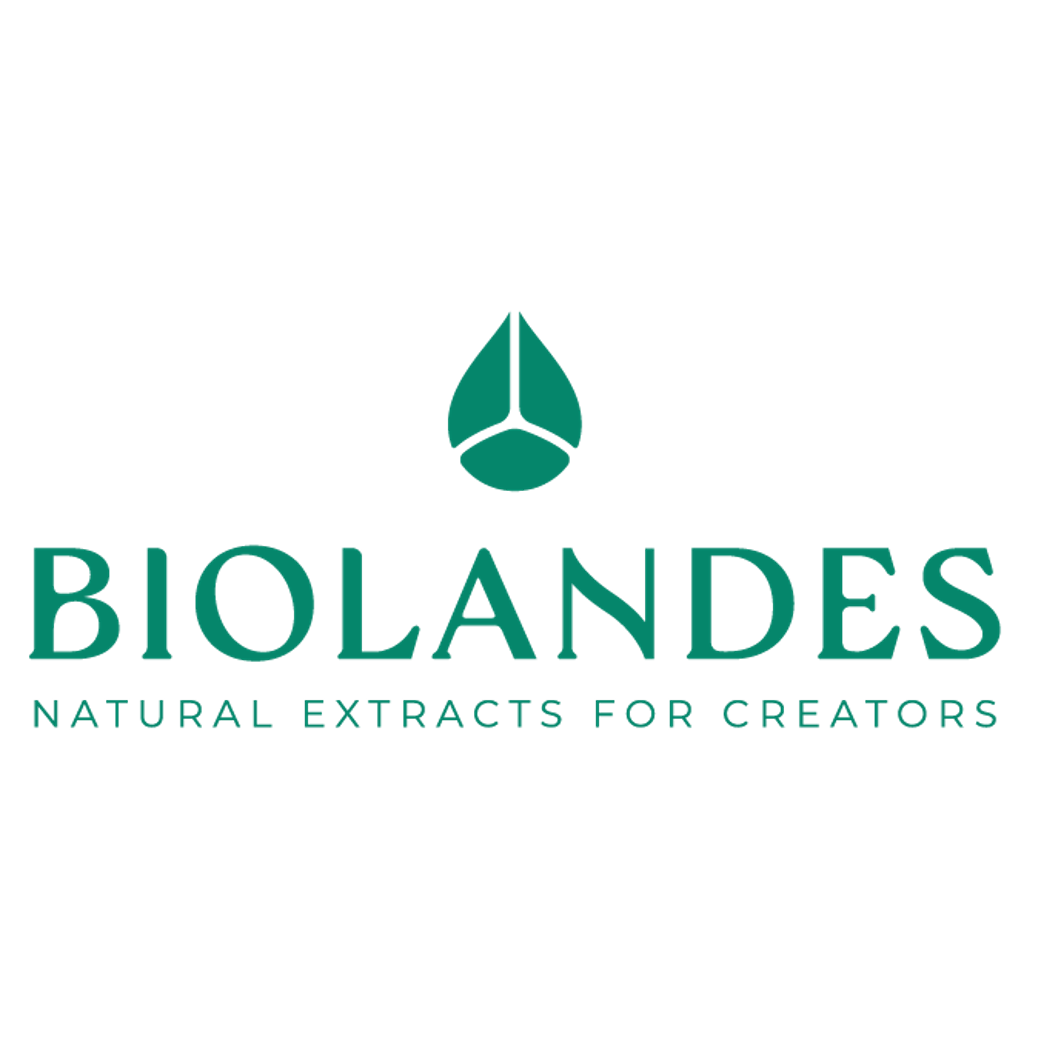Lavender Absolute
Naturelle
Herbal > Lavender > Grassy

Crédits photo: ScenTree SAS
Latin name :
Lavandula angustifolia
Botanical profile :
Lavender is a plant belonging to the Labieae family and the Lavandula genus.
Geographic origin :
The largest lavender productions are located in the South of France (1st world producer), Spain, Bulgaria or China.
Russia, Hungary and Tasmania are also producers, to a lesser extent.
Russia, Hungary and Tasmania are also producers, to a lesser extent.
Chemotypes :
There are several varieties of lavender: the population and the clonal. The difference comes mainly from genetics and historical crosses. The population lavender is the historical variety. It has never been crossed and is therefore recognizable by plants of various aspects and very heterogeneous fields as the reproduction is sexed and made from seeds. The clonal lavender comes from population lavender cuttings. Very homogeneous fields and similar plants are obtained with this method. It is mainly produced in Bulgaria, but it is possible to find some in France. Olfactively, the difference is notable. Clonal lavender is poorer, less varied. Among the clonals, there are three major species: the maillete, the matherone and the diva, differentiated by their Ocimene level. Among the populations, we distinguish the rapido, the sara and the carla, which contain an intermediate rate of Ocimene.
Overall, lavender has 32 different species linked to the genus Lavandula, not counting hybrids.
In perfumery, there are especially hybrid species such as Lavandin Grosso EO with a terpenic and camphorated smell, and the Aspic EO, even more camphorated (see Lavandin and Aspic).
Overall, lavender has 32 different species linked to the genus Lavandula, not counting hybrids.
In perfumery, there are especially hybrid species such as Lavandin Grosso EO with a terpenic and camphorated smell, and the Aspic EO, even more camphorated (see Lavandin and Aspic).
Extraction process :
Lavender is a 20 to 60 cm tall herbaceous sub-shrub with evergreen leaves and blooming blue-purple flowers from July-August. The production of lavender requires a certain altitude, located between 600 and 1500 meters.
After declining between the 1960s and 2000s, production is now increasing thanks to Bulgarian productions among others, twice as big as French productions.
Cultivation and extraction are done in August-September, using a green ground process. This process (ensilage) consists in extracting the plants directly after cutting. Therefore, the smell is greener and cooler than if the plant was dried in the sun beforehand.
The first step of extraction is to put the flowers on grids, immersed in a tank filled with hexane. After a few hours of extraction, the flowers are removed and the hexane is evaporated and recycled for another extraction. The resulting paste is the concrete of lavender. The second step consist in diluting this concrete in alcohol and in glazing this mixture, subjecting the solution to a temperature gradient of 140 °F to 32 °F. The concrete waxes precipitate and are filtered to collect the mixture of alcohol and lavender absolute. The lavender absolute is obtained after the alcohol has evaporated, with a yield between 1 and 2.2%, and has a very green, herbaceous smell as well as a great tenacity.
The extraction yield of lavender is lower than the lavandin because lavender contains fewer flower heads.
The absolute can be rectified to be obtained without terpene or without colouration. It can also be acetylated to increase its level of Linalyl Acetate to be extracted later.
After declining between the 1960s and 2000s, production is now increasing thanks to Bulgarian productions among others, twice as big as French productions.
Cultivation and extraction are done in August-September, using a green ground process. This process (ensilage) consists in extracting the plants directly after cutting. Therefore, the smell is greener and cooler than if the plant was dried in the sun beforehand.
The first step of extraction is to put the flowers on grids, immersed in a tank filled with hexane. After a few hours of extraction, the flowers are removed and the hexane is evaporated and recycled for another extraction. The resulting paste is the concrete of lavender. The second step consist in diluting this concrete in alcohol and in glazing this mixture, subjecting the solution to a temperature gradient of 140 °F to 32 °F. The concrete waxes precipitate and are filtered to collect the mixture of alcohol and lavender absolute. The lavender absolute is obtained after the alcohol has evaporated, with a yield between 1 and 2.2%, and has a very green, herbaceous smell as well as a great tenacity.
The extraction yield of lavender is lower than the lavandin because lavender contains fewer flower heads.
The absolute can be rectified to be obtained without terpene or without colouration. It can also be acetylated to increase its level of Linalyl Acetate to be extracted later.
Major Components :
Linalyl Acetate
Linalool
Lavandulol
Lavandulyl Acetate
Coumarin
3-methoxyCoumarin
Beta-Caryophyllene
Beta-Farnesene
D-Limonene
Beta-cis-Ocimene
Linalool
Lavandulol
Lavandulyl Acetate
Coumarin
3-methoxyCoumarin
Beta-Caryophyllene
Beta-Farnesene
D-Limonene
Beta-cis-Ocimene
- Uses in perfumery :
- Used in fougere fragrances to bring a lavender base note, often associated with the essential oil of lavender, which is more heady. Used to give a natural effect to a lavender note. More used in men's fragrances than women's. More generally, brings a straw facet, dry and agressive grass.
- Other comments :
- Note that there is a French PDO designation, obtained for a lavender produced at 800 meters above the sea level, guaranteed 100% pure and natural, produced in a defined area and having specific chromatographic characteristics. The label is awarded by a jury of experts after an olfactory evaluation. Other labels such as the ECO-Cert, Qualité-France and SOCOTEC labels can be attributed to organic lavender absolute productions.
On the lavender plant population, the leafhopper, an insect feeding on plant sap, bites the plants causing their death. Kaolin is a pesticide used to control this insect, which does not attack clonal lavender plants.
Many adulterations can occur regarding the absolute lavender. It can be adulterated by other types of lavender with a lower cost, by a Lavandin Absolute, by addition of synthetic compounds such as Linalyl Acetate, Linalool, Coumarin, Ocimene or other terpenes. Compliance with production standards is validated by chromatographic analysis.
Each molecule must have a minimum and maximum rate in the produces absolute. - Volatility :
- Heart/Base
- Appearance :
- Colorless liquid
- Stability :
- Solubility issues in perfumes
The esters identified in this raw material can form their corresponding acid in stability tests
The terpenes identified in this raw material can polymerize when they are oxidized - Price Range :
- €€€€
- Aromatherapy :
Informations provided below are taken from reference works in aromatherapy. They are given for information purposes only and can not constitute medical information, nor engage the responsibility of ScenTree.
Lavender essential oil has antispasmodic, calming, hypotensive, anti-inflammatory properties and is indicated in cases of nervousness (nervous spasms), burns, ulcers and muscle cramps among others.

Crédits photo: ScenTree SAS
- EINECS number :
- 97722-12-8
- FEMA number :
- 2620
- Allergens :
- Linalool - D-Limonene - Geraniol
- IFRA :
- This ingredient is restricted by IFRA
- Annexe I :
- Some regulated synthetic ingredients are found in nature and in certain proportions in natural ingredients. This presence in nature has to be taken into account when calculating limits of use recommended by the IFRA. In case you do not know these concentrations, you can use the ones estimated by the IFRA. Here they are :
- Annexe I :
- Some regulated synthetic ingredients are found in nature and in certain proportions in natural ingredients. This presence in nature has to be taken into account when calculating limits of use recommended by the IFRA. In case you do not know these concentrations, you can use the ones estimated by the IFRA. Here they are :
| List of regulated compounds contained in this ingredient | ||
|---|---|---|
| Regulated ingredient name | CAS N° | Estimated Concentration |
| 1-Octen-3-yl acetate | 2442-10-6 | 0,7 |
| Geraniol | 106-24-1 | 0,9 |
| 7-Methoxycoumarin | 531-59-9 | 5 |
| List of regulated compounds contained in this ingredient | ||
|---|---|---|
| Regulated ingredient name | CAS N° | Estimated Concentration |
| 1-Octen-3-yl acetate | 2442-10-6 | 0,7 |
| Geraniol | 106-24-1 | 0,9 |
| 7-Methoxycoumarin | 531-59-9 | 5 |
To learn more about IFRA's standards : https://ifrafragrance.org/safe-use/library
ScenTree is solely responsible for the information provided here.




